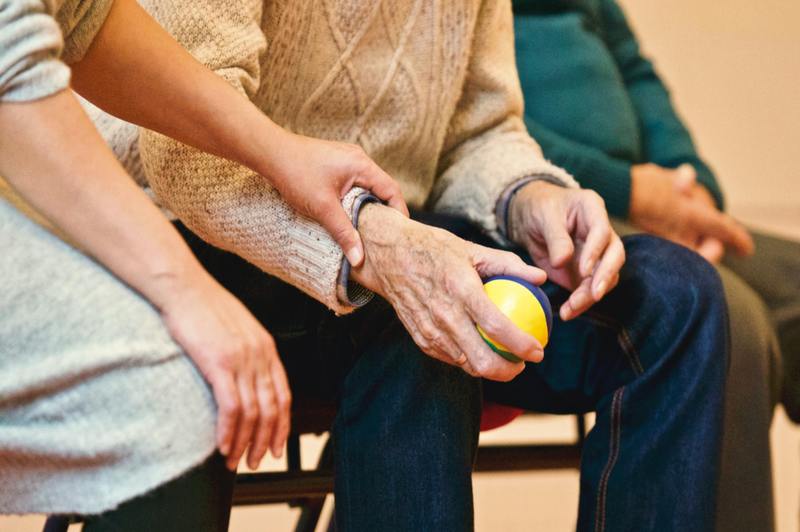Transferring patients should be done properly. Read and learn how to lift an elderly person from a chair so you can be sure that you are doing it right. You cannot afford to risk someone’s safety, right?
When lifting, assisting, and moving, the use of good body mechanics is important. This is to avoid injuries for both the patient and you.

Lifting An Elderly Person From A Chair
Taking care of patients, especially older ones, requires much more than feeding and cleaning them. Oftentimes, you will need to move and transfer them safely. Here is the proper way of lifting an elderly adult from a chair.
Step #1. You must first inform the patient about moving them. This is important so you can avoid sudden reactions.
Step #2. Remove any hindrances or anything that may disturb the lifting. Check if the floor is wet — it might be slippery and dangerous. See if there are any objects that can harm you and the patient during the transfer and get rid of them.
Step #3. Now, position yourself. Stand with head up, shoulders back, back straight, and chest high. Keep your feet apart as wide as your hip.
Stay as close as possible to the patient. Bend with your knees and hip.
Step #4. Lift with your leg muscles and not your arms. Do not twist your waist as it may result in an injury. As much as possible, allow the patient to do much of the moving by herself and do not reach out when lifting.
Step #5. After successfully lifting the patient, transfer him or her to a wheelchair, a bed, or any safe surface. You should also ask them if there is anything they want you to do differently next time and take note of that.
These steps should be followed strictly to avoid risking your patient’s safety. It is also important to take note that if you have an injury, you are out! You cannot lift a person in that condition as it may create a danger to you and the elderly adult.
Helping an elderly person sit on a chair
Elderly adults often have trouble sitting on a chair since their joints and muscles are getting weak. This is why it is important to give them proper assistance.
Step #1. Ask the patient if the chair is near enough. If not, adjust the chair to a comfortable distance.
Step #2. Position yourself close to the patient. Place your nearest hand to her waist.
Step #3. For a fist with your other hand. Ask the patient to put her nearest hand over it.
Step #4. Assist her to a position where she can feel the chair in the back of her legs. Provide enough support as the sit-down. It will be helpful to have the elderly person sit on a chair with arms as she can hold them as she sits.
Tips you should remember when assisting elderly people
- Allow them to do as much as possible for themselves. Discouraging them from doing the things they can do will not help them.
- Remember that you should always inform them of the things you’re doing. Tell when you are lifting, moving, or transferring.
- Give them enough time to follow your instructions. Be patient and do not rush or pressure them.
- Do not ever pull them with their legs or arms. Always hold them in their hips or trunk.
- When moving them, a wide transfer belt around their waist will be a great grip.
- You should ask for help when needed. Do not force yourself to do something you can’t do alone.
- The use of good body mechanics is essential. This prevents injury for both you and the elderly person.
- Use non-skid shoes so you can avoid slipping when assisting them.
- Always check if the surroundings are safe before doing anything. Check for objects that might impose harm to both you and the elderly.
- In case the person you are transferring to starts falling, do not panic! Slowly bend yourself and lower them to a safe surface. Never ever grab a patient’s clothing to stop them from falling.
- Do not forget that lifting a person when you are injured is dangerous so you must not do it. It is also not advisable to lift someone heavier than you unless you were trained in doing it.
Conclusion
When your loved ones require assistance in mobility, it is important to protect their safety. Depending on the severity of the condition and the amount of assistance needed, you must get professional advice. Nurses and health aides can teach you techniques to make the job easier.
Following safety precautions is not just for the patient, but also for yourself. It is important that you are safe so you can keep on taking care of them.
Learning how to lift an elderly person from a chair is just one of the essentials you need to know when taking care of your loved ones. Along with the proper feeding and cleaning, proper mobility assistance is a great help for them.
